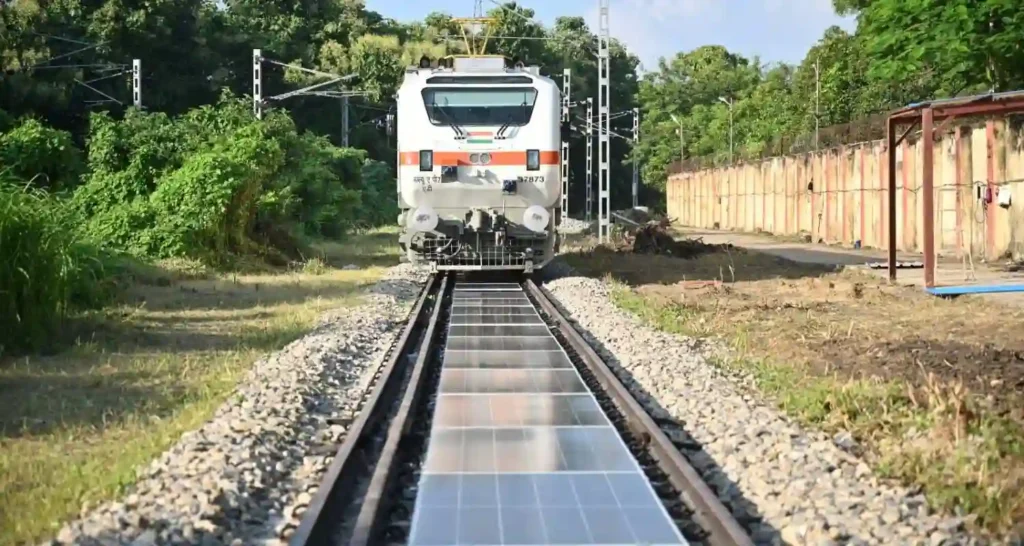India’s railways have turned a new corner in renewable energy. In Varanasi, engineers have installed the country’s first removable solar panels between active railway tracks—a pilot that could reshape how the world’s fourth-largest rail network powers itself.
A First for India’s Railways
The Banaras Locomotive Works (BLW) unveiled the system this week on a 70-meter stretch of Line 19 inside its workshop. Twenty-eight bifacial monocrystalline panels now sit securely between the rails, capable of generating 15 kilowatts peak (kWp) of electricity. Officials say the design demonstrates how unused track space can be transformed into clean-energy corridors.
Designed to Withstand Trains
The innovation lies in its adaptability. Panels are mounted on concrete sleepers with epoxy adhesives and rubber pads that absorb the rumble of passing locomotives. For maintenance, each unit can be quickly unbolted with just four stainless-steel Allen screws—allowing crews to lift them out without disrupting operations.
Energy Output Without Land Costs
The pilot suggests a promising density of 220 kWp per kilometre, translating to roughly 880 units of electricity per kilometre per day. If deployed at scale across rail yards and workshop lines, the annual potential could exceed three lakh kilowatt-hours per kilometre—all without acquiring new land.
A Net-Zero Ambition
Indian Railways, one of the world’s largest transport networks, has pledged to achieve net-zero carbon emissions by 2030. Rooftop solar projects are already underway at stations and workshops, but the Varanasi experiment marks a bold attempt to integrate solar generation directly into the railway’s physical fabric.
The Bottom Line:
For Indian Railways, Varanasi’s pilot is more than an engineering feat—it is a blueprint. If successful, removable solar panels could turn thousands of kilometres of idle track space into renewable energy farms, powering the trains of tomorrow without pausing the trains of today.


